Tara Isabella Burton in The New Atlantis:
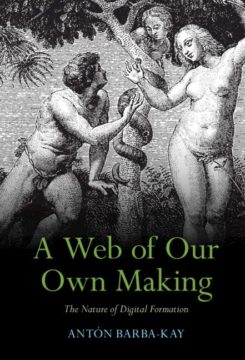 Reality is different these days. It isn’t just that we have the tools to experience reality differently, or augment reality, by affixing a Meta Quest headset or an Apple Vision Pro to our skulls. It isn’t just that we have the ability to quantify reality, through smartwatches and heart rate monitors and step counters and sleep trackers, or that we have the ability to manipulate people’s perceptions of reality, through social media filters so ubiquitous that there is now a whole cottage industry of plastic surgery devoted to making people’s fleshly faces match the selfies they post on Instagram. Nor is it just the fact that our social world includes the conversations we have with virtual personal assistants like Siri and Alexa, whose soothing voices greet us when we come home, or remind us of the weather.
Reality is different these days. It isn’t just that we have the tools to experience reality differently, or augment reality, by affixing a Meta Quest headset or an Apple Vision Pro to our skulls. It isn’t just that we have the ability to quantify reality, through smartwatches and heart rate monitors and step counters and sleep trackers, or that we have the ability to manipulate people’s perceptions of reality, through social media filters so ubiquitous that there is now a whole cottage industry of plastic surgery devoted to making people’s fleshly faces match the selfies they post on Instagram. Nor is it just the fact that our social world includes the conversations we have with virtual personal assistants like Siri and Alexa, whose soothing voices greet us when we come home, or remind us of the weather.
All of these, of course, play some role in the seismic reimaging of our selves, and our world, that the Internet — in particular, smartphone-enabled online culture — has engendered. But the shift we’re experiencing is bigger, and more totalizing, than any single phenomenon.
More here.

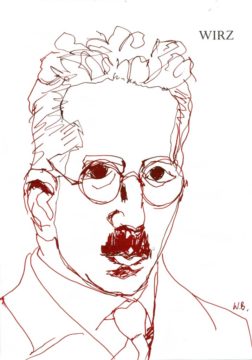 No audio recordings of Walter Benjamin have survived. His voice was once described as beautiful, even melodious—just the sort of voice that would have been suitable for the new medium of radio broadcasting that spread across Germany in the 1920s. If one could pay the fee for a wireless receiver, Benjamin could be heard in the late afternoons or early evenings, often during what was called “Youth Hour.” His topics ranged widely, from a brass works outside Berlin to a fish market in Naples. In one broadcast, he lavished his attention on an antiquarian bookstore with aisles like labyrinths, whose walls were adorned with drawings of enchanted forests and castles. For others, he related “True Dog Stories” or perplexed his young listeners with brain teasers and riddles. He also wrote, and even acted in, a variety of radio plays that satirized the history of German literature or plunged into surrealist fantasy. One such play introduced a lunar creature named Labu who bore the august title “President of the Moon Committee for Earth Research.”
No audio recordings of Walter Benjamin have survived. His voice was once described as beautiful, even melodious—just the sort of voice that would have been suitable for the new medium of radio broadcasting that spread across Germany in the 1920s. If one could pay the fee for a wireless receiver, Benjamin could be heard in the late afternoons or early evenings, often during what was called “Youth Hour.” His topics ranged widely, from a brass works outside Berlin to a fish market in Naples. In one broadcast, he lavished his attention on an antiquarian bookstore with aisles like labyrinths, whose walls were adorned with drawings of enchanted forests and castles. For others, he related “True Dog Stories” or perplexed his young listeners with brain teasers and riddles. He also wrote, and even acted in, a variety of radio plays that satirized the history of German literature or plunged into surrealist fantasy. One such play introduced a lunar creature named Labu who bore the august title “President of the Moon Committee for Earth Research.” LASTING FOR THREE STRAIGHT DAYS,
LASTING FOR THREE STRAIGHT DAYS, Humans are bioelectrical beings. The collections of cells that make up tissues and organs communicate using the language of voltages and electric fields. This electrical code is produced by specialized ion channels and proteins imbedded in cell membranes.
Humans are bioelectrical beings. The collections of cells that make up tissues and organs communicate using the language of voltages and electric fields. This electrical code is produced by specialized ion channels and proteins imbedded in cell membranes. 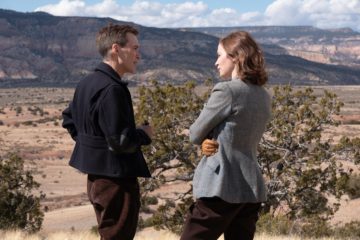 M
M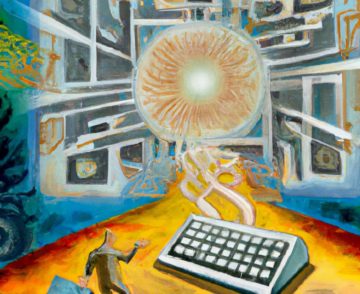 When I was a graduate student at the start of the 1990s, I spent half my time thinking about artificial intelligence, especially artificial neural networks, and half my time thinking about consciousness. I’ve ended up working more on consciousness over the years, but over the last decade I’ve keenly followed the explosion of work on deep learning in artificial neural networks. Just recently, my interests in neural networks and in consciousness have begun to collide.
When I was a graduate student at the start of the 1990s, I spent half my time thinking about artificial intelligence, especially artificial neural networks, and half my time thinking about consciousness. I’ve ended up working more on consciousness over the years, but over the last decade I’ve keenly followed the explosion of work on deep learning in artificial neural networks. Just recently, my interests in neural networks and in consciousness have begun to collide.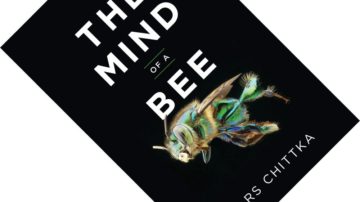 Justifiably, the book opens with sensory biology. Before we understand what is in the mind of any organism, Chittka argues, we first need to understand the gateways, the sense organs, through which information from the outside world is filtered. These are shaped by both evolutionary history and daily life (i.e. what information matters on a day-to-day basis and what can be safely ignored). Chapter 2 deals with the historical research that showed that bees do have colour vision and furthermore can perceive ultraviolet (UV) light. Many flowers sport UV patterns invisible to us. Remarkably, UV photoreceptors are found in numerous insects and other crustaceans whose shared ancestry goes back to the Cambrian, predating
Justifiably, the book opens with sensory biology. Before we understand what is in the mind of any organism, Chittka argues, we first need to understand the gateways, the sense organs, through which information from the outside world is filtered. These are shaped by both evolutionary history and daily life (i.e. what information matters on a day-to-day basis and what can be safely ignored). Chapter 2 deals with the historical research that showed that bees do have colour vision and furthermore can perceive ultraviolet (UV) light. Many flowers sport UV patterns invisible to us. Remarkably, UV photoreceptors are found in numerous insects and other crustaceans whose shared ancestry goes back to the Cambrian, predating 
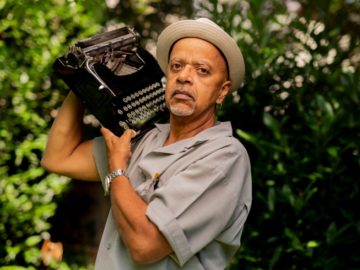 “You know, I don’t really talk to that many other novelists,” James McBride told me. “I don’t spend a lot of time with other writers.” It was a statement that explained a lot, while at the same time shooting a pet theory out of the water. If McBride’s most recent books—the celebrated
“You know, I don’t really talk to that many other novelists,” James McBride told me. “I don’t spend a lot of time with other writers.” It was a statement that explained a lot, while at the same time shooting a pet theory out of the water. If McBride’s most recent books—the celebrated 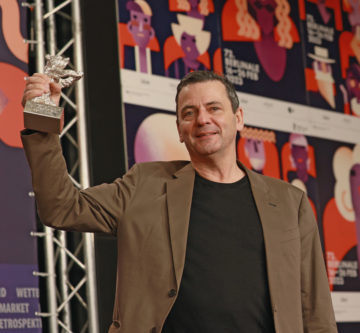 Petzold has said in interviews that, when he contracted Covid in 2020, he spent weeks watching the films of Eric Rohmer, a French director whose films tell deceptively simple stories, almost fables, and Afire follows this model. The first two acts of the film are essentially a dark comedy of manners: Devid and Felix sleep together, Leon makes fumbling attempts to win Nadja’s affections while offending her and embarrassing himself at every turn. Wildfires are raging in a nearby forest, but our vacationers assure one another that, due to prevailing wind patterns, they are safe from the ongoing devastation—a presumption begging to be challenged.
Petzold has said in interviews that, when he contracted Covid in 2020, he spent weeks watching the films of Eric Rohmer, a French director whose films tell deceptively simple stories, almost fables, and Afire follows this model. The first two acts of the film are essentially a dark comedy of manners: Devid and Felix sleep together, Leon makes fumbling attempts to win Nadja’s affections while offending her and embarrassing himself at every turn. Wildfires are raging in a nearby forest, but our vacationers assure one another that, due to prevailing wind patterns, they are safe from the ongoing devastation—a presumption begging to be challenged.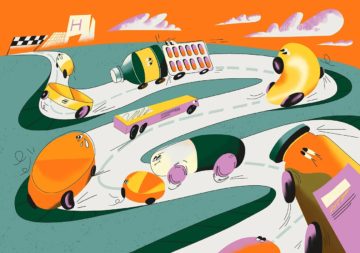 In August 2021, Amol Akhade, an oncologist at Nair Medical Hospital in Mumbai, India, received an e-mail from the Swiss drug manufacturer Roche recommending the use of a drug named atezolizumab to treat a specific kind of breast cancer. Akhade was surprised. That month, Roche had withdrawn the drug for this purpose in the United States (although it is still approved to treat other kinds of cancer).
In August 2021, Amol Akhade, an oncologist at Nair Medical Hospital in Mumbai, India, received an e-mail from the Swiss drug manufacturer Roche recommending the use of a drug named atezolizumab to treat a specific kind of breast cancer. Akhade was surprised. That month, Roche had withdrawn the drug for this purpose in the United States (although it is still approved to treat other kinds of cancer).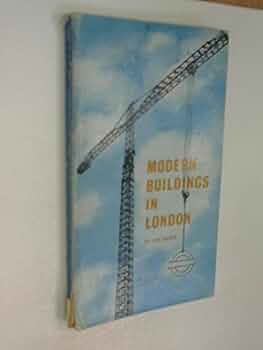 It seems no less than highly appropriate that when Ian Nairn’s Modern Buildings in London first appeared in 1964 it was purchasable from one of a hundred automatic book-vending machines that had been installed in a selection of inner-London train stations just two years earlier. Sadly, these machines, operated by the British Automatic Company, were short-lived. Persistent vandalism and theft saw them axed during the so-called Summer of Love, by which time, and perhaps thanks to Doctor Who’s then-recent battles with mechanoid Cybermen, the shine had rather come off the idea of unfettered technological progress. Stanley Kubrick’s 2001: A Space Odyssey, with its malevolent supercomputer HAL 9000, after all, lay only a few months away. And so too, did the partial collapse of the Ronan Point high-rise (a space-age monolith of sorts) in Canning Town, East London—an event widely credited with helping to turn the general public against modernist architecture.
It seems no less than highly appropriate that when Ian Nairn’s Modern Buildings in London first appeared in 1964 it was purchasable from one of a hundred automatic book-vending machines that had been installed in a selection of inner-London train stations just two years earlier. Sadly, these machines, operated by the British Automatic Company, were short-lived. Persistent vandalism and theft saw them axed during the so-called Summer of Love, by which time, and perhaps thanks to Doctor Who’s then-recent battles with mechanoid Cybermen, the shine had rather come off the idea of unfettered technological progress. Stanley Kubrick’s 2001: A Space Odyssey, with its malevolent supercomputer HAL 9000, after all, lay only a few months away. And so too, did the partial collapse of the Ronan Point high-rise (a space-age monolith of sorts) in Canning Town, East London—an event widely credited with helping to turn the general public against modernist architecture. Ask a cancer researcher what the breakthrough treatment of the decade is, and they’ll tell you CAR T takes the crown. The therapy genetically engineers a person’s own immune cells, turning them into super soldiers that hunt down cancerous blood cells. With astonishing speed, multiple CAR T therapies have
Ask a cancer researcher what the breakthrough treatment of the decade is, and they’ll tell you CAR T takes the crown. The therapy genetically engineers a person’s own immune cells, turning them into super soldiers that hunt down cancerous blood cells. With astonishing speed, multiple CAR T therapies have  Glioblastoma (GBM) is the most common and malignant form of primary brain cancer. More effective treatments for GBM are direly needed, as the median survival with current therapeutic options is 15 months. One difficulty that scientists face is developing GBM treatments that overcome therapeutic resistance. GBM tumor cells invade the surrounding brain tissue and acquire resistance mediated by factors in the tumor microenvironment (TME). Conventional drug screens that rely on tumor cells grown in culture lack the TME, highlighting the need for better
Glioblastoma (GBM) is the most common and malignant form of primary brain cancer. More effective treatments for GBM are direly needed, as the median survival with current therapeutic options is 15 months. One difficulty that scientists face is developing GBM treatments that overcome therapeutic resistance. GBM tumor cells invade the surrounding brain tissue and acquire resistance mediated by factors in the tumor microenvironment (TME). Conventional drug screens that rely on tumor cells grown in culture lack the TME, highlighting the need for better